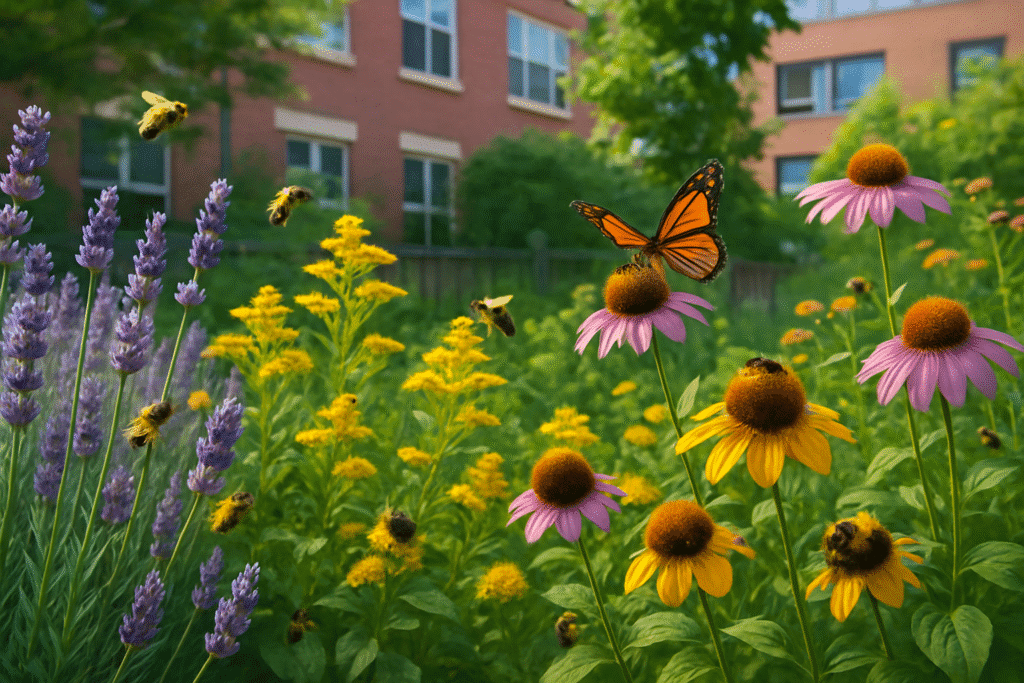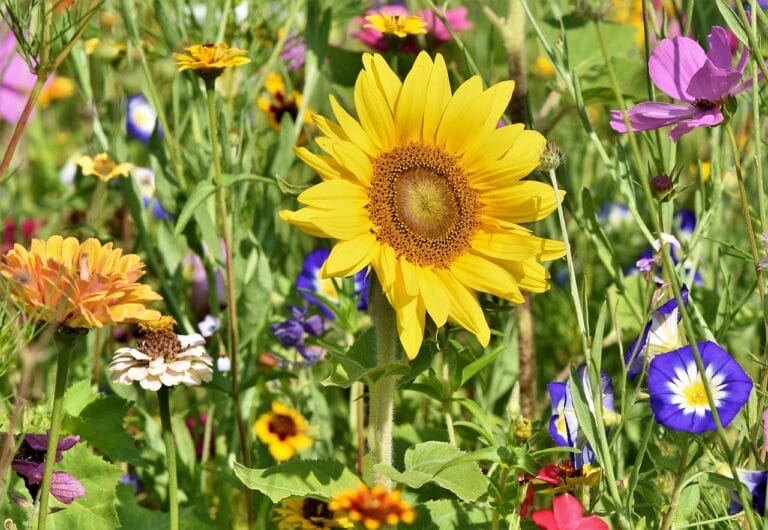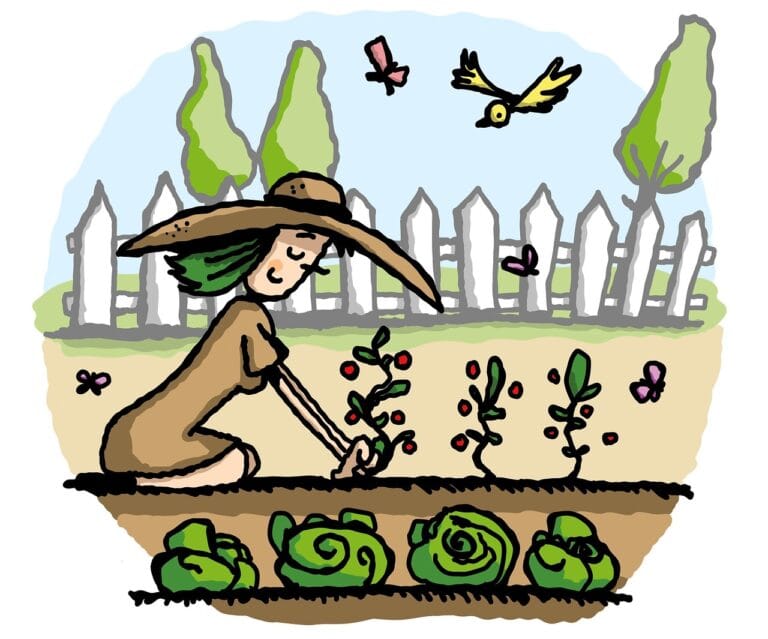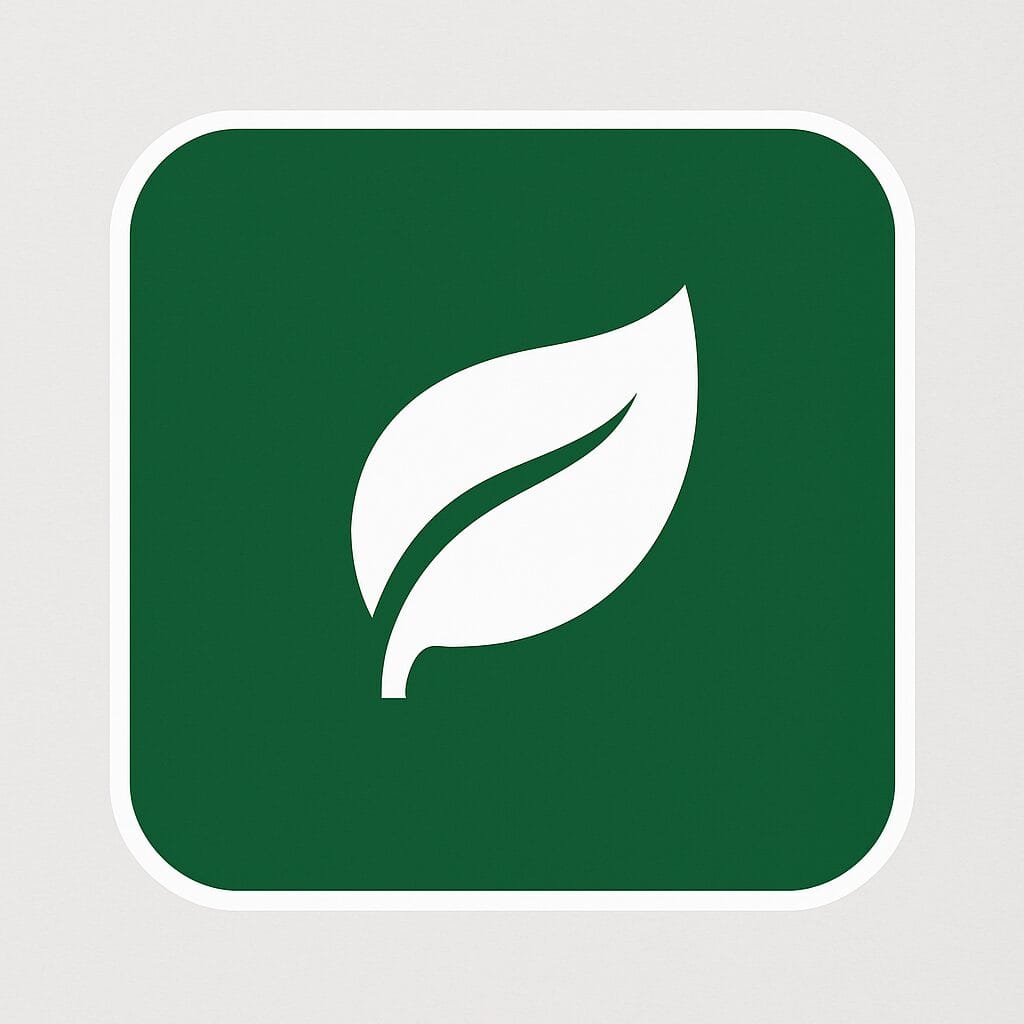
Table of Contents
ToggleIntro: Why we should care to support native pollinators?
When we think about a pollinator, we imagine bees and butterflies buzzing through meadows or fluttering in the forest. But nowadays these species often lose their natural habitat due to roads, concrete, high-rise infrastructure, or human interference. Native pollinators like butterflies, hoverflies, or bees are important for the ecosystem, which is why it’s our responsibility to support native pollinators. Unfortunately, their population is decreasing due to habitat loss,pollution, and climate change.
Around 75% of global food crops depend, at least in part, on pollination Source: FAO. Now, don’t think cities are just part of the problem; they can be part of the solution. Even if you are in the densest urban areas, your small efforts like planting native flowers and avoiding chemicals can make a real difference. In this blog, I will make you realise how easy it is to support native pollinators.
How to support native pollinators in cities -
1. Plant native pollinators’ friendly flowers: invasive pollinators are poor in nectar and pollen. You should grow native plants that provide the right nectar, pollen, and bloom cycles that pollinators evolved with. Grow a mix of seasonal plants that can support pollinators across seasons. One tip for you, choose local wildflowers, herbs, and shrubs like elderberry or viburnum.
2. Avoid pesticides: Many pesticides, herbicides, and fungicides are dangerous to pollinators even in tiny doses. Avoid chemical spray on lawns, gardens, and balconies; go completely organic. Do you know that Neonicotinoids can stay active in plants and soil for years and silently harm insects?
3. Create nesting shelter areas: Most of the native bees nest in the ground or inside hollow stems. You can leave bare patches of soil and keep dead plant stems standing over winter. Also, you can install bee hotels made from untreated wood or bamboo tubes. Make sure to clean bee hotels yearly to avoid spreading disease.
4. Reduce night-time light pollution: excessive artificial lighting confuses nocturnal pollinators like moths. It also interrupts their feeding and reproduction processes. I have a solution for it, you can use warm-colored LEDs (under 3000k), motion sensors or shielded fixtures.
5. Choose green lawns : traditional lawns are an ecological desert. To attract and feed pollinators you can replace patches with flowering groundcovers or wildflower meadows. You can add clover because it fixes nitrogen in the soil and reduces the need for fertilizer.
6. Support community pollinator initiative : you can join local efforts like pollinator pathways, urban rooftop gardens or re-wilding projects. These initiatives connect fragmented habitats and raise awareness. Look at this example- Seattle’s pollinator pathway and London’s B-line project both connect pollinator-friendly spaces across cities.
7. Provide a water source: pollinators need water not just to drink but also to cool down and dilute nectar. So you can set up shallow dishes with clean water and pebbles for a safe landing. Here is a DIY tip- Upcycle a plant saucer, add gravel, and keep it topped up especially in summer.
8. Let’s some plants bolt and go to seed : In urban gardening we often cut herbs and flowers earlier right ? But now let a few plants like coriander, basil, or lettuce flower naturally, which can help to attract a wide range of native bees. Their blossoms are small but loved by tiny solitary bees. One tip for you – don’t deadhead every flower, leave a few for nature to enjoy.

Additional impactful steps :-
Pollinator pathways : to support native pollinators in cities, one effective idea is creating “pollinator pathways”. These pathways are connected green spaces such as gardens parks or roadside plantings. It acts as a stepping stone for pollinators to move safely across urban landscapes. These corridors ensure pollinators don’t get isolated in fragmented pockets.
In Seattle and other cities residents and local councils are working together to grow native flowering plants along sidewalks and community spaces. It helps to connect small pollinator habitats. “A city with connected green pockets is far more beneficial than isolated green rooftops or gardens”.
Avoiding plant monocultures: When we plant only one or two types of flowers, even if they are native, it limits the diversity of pollinators that can benefit. For example, some bees are specialists and only feed from a specific type of plant. Hence, urban spaces should be filled with a mix of flowering plants with different bloom Times, colors, and structures to support a wider range of species, which includes butterflies, moths, solitary bees, and hoverflies.
Community science : it can help pollinators but how? Citizen science initiatives like iNaturalist, Bumblebee Watch, or the Great Sunflower Project. These initiatives allow city residents to record pollinator sightings and plant behaviour. This data helps scientists to understand urban pollinator trends and encourages people to stay actively involved in helping pollinators. Even school children and senior citizens can contribute to building awareness and giving a sense of purpose while supporting biodiversity.

Create native pollinator habitat: help native bees in cities
When we talk about bees people often imagine honey bees, but there are many native bees like – mason bees , leafcutter bees and sweat bees are the unsung heroes of pollination. They are more efficient in pollination compared to honey bees but also vulnerable to habitat loss.
1. Prioritise hyper-local native plants: it is the most uncommon advice, instead of generic “bee-friendly” flowers, plant hyper-local native species. They can be found easily in your region. Natives often specialize in plants.
2. Install a moist clay patch: Many people are busy establishing a hotel, but most bees actually nest underground. Mining bees and sweat bees can be helped by providing a moist clay patch or a small, undisturbed dirt area for ground nesting.
3. Year-round bloom schedule: design a garden in a way to provide nectar and pollen all year round, across all seasons. Native bees are active at different times of the year, and gaps in floral resources can be risky.
4. DIY sand nesting zone: Some native bees prefer Sandy and well-drained soil to lay eggs. Place a shallow sand tray in a sunny, dry corner of your yard or balcony. It will help in attracting rare species like polyester bees.
5. Avoid mulching : don’t mulch every corner of the nesting spot because it causes suffocation. Leave some soil exposed in shady areas so bees can safely dig burrows.
6. Skip bee hotels : either use bee hotels properly or skip them because store-bought Bee hotels become breeding spots for pests. If you are using them, make sure they are made of natural, untreated wood. And has removable tubes for cleaning.
7. Avoid lawn obsession : it’s helpful for you to reduce mowed lawn space and embrace native “weeds” like clover, violet, or dandelions. These are crucial because they are food sources for bees in early spring.
8. Night save lighting: just like us, many native bees navigate using natural light. Install bee-friendly lighting, dim, facing downward, and also on timers. It helps to prevent disruption of their foraging patterns.

What challenges native pollinators face
Urban areas are often seen as concrete jungle. They cannot be a favorable place to support native pollinators. Despite their parks and gardens, cities have unique challenges that disrupt the life cycle of bees, butterflies, beetles, and other pollinators.
1. Loss of natural Habitat : A major problem comes when cities expand. Natural habitats like grasslands, meadows, and forest edges are replaced by roads, buildings, and Pavements. Previously, the native plants that were dependent on these spaces now suffer for survival and shelter. Their home has been destroyed
2. Dominance of invasive: urban landscaping favours non native, decorative plants for an aesthetic look. But these plants have little nectar or pollen. Replacement of native plants leaves pollinators with very limited food sources and shelter. Those pollinators that depend especially on a native plant have completely vanished in that region.
3. Use of pesticide chemicals: You have often seen that even in home gardens and city parks, the widespread use of pesticides, herbicides, and insecticides poses a serious threat. These chemicals poison pollinated plants and we can affect their immune system. They also disrupt navigation and the reproduction process.
4. Light and noise pollution : artificial light in urban areas can disorient nocturnal pollinators like moths. It disrupts their ability to feed or reproduce. Similarly, urban noise disturbs the communication and behaviour of those pollinators who rely on sound or vibration. A UK-based study published in Nature (2017) found that street lighting disrupts moth pollination, which causes a significant drop in nighttime reproduction.
5. Lack of nesting site : Many native bees nest in the ground, hollow stems, or decaying wood. And all of these areas are often cleared or cleaned up in urban areas. Overly maintained lawns and sealed landscapes offer very little space, which is not enough for pollinators to raise the next generation. According to IPBES (Intergovernmental Science-Policy Platform), habitat loss and pesticides are major contributors to the decline.
Conclusion : it's showtime
Native pollinators are silently important to keep our urban ecosystem alive. But still they are being constantly destroyed by our modern cities. You know what’s the good news ? Even in the dense concrete forest every garden, terrace, balcony or sidewalk strip has the potential to become a pollinator haven.
By following the ultimate guide and countering all the challenges we can support native pollinators that are essential to biodiversity and food production. Cities are not compelled to be a lifeless concrete jungle; with the right efforts, they can bloom with biodiversity.
Visit these post
